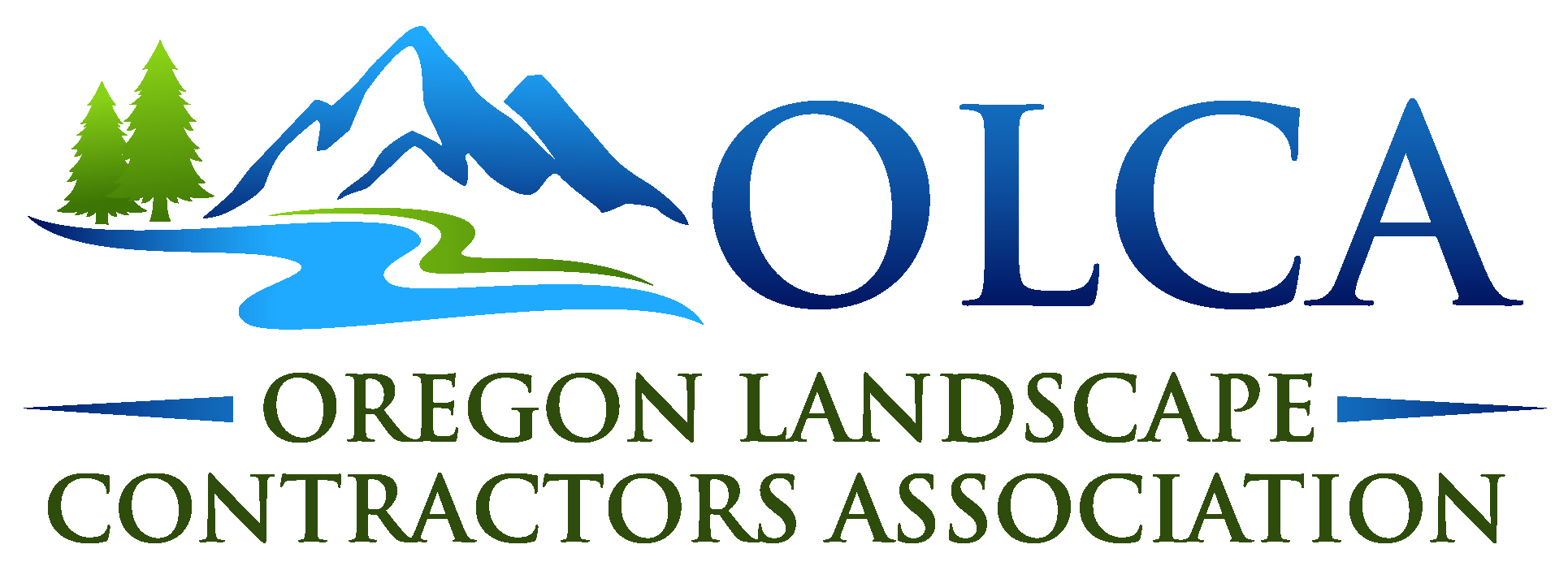Environmental Resource CommitteeThe Environmental Resource Committee (ERC) is an OLCA committee made up of active, passionate individuals from different parts of the landscape industry working to keep our membership up to speed on “sustainable landscaping”. Over the last decade, the mission of the committee has been to help connect OLCA members to current affairs, useful resources, continuing education, new policies, and programs available to members. We also help represent the interests of OLCA’s members in conversations with regulatory and educational agencies.
If you want to join in or have any information to share, please contact ERC Committee Chair, Doug Crimin at [email protected].
ResourcesEmerald Ash Boring Beatle On June 30, 2022, emerald ash borer was discovered in Forest Grove, Oregon, marking the first confirmation of the invasive pest on the West Coast. In Oregon, the establishment of EAB could devastate whole habitat types that are dominated by Oregon ash, such as ash swales and sensitive riparian zones. It could also reduce urban forest cover. This pest has proven deadly to all ash species in North America and Europe, including the native Oregon ash (Fraxinus latifolia). Oregon can’t eradicate EAB but we are working to slow its spread to give communities and landowners more time to prepare. Removing infested trees before EAB larvae emerge helps slow the spread by reducing the number of adults that can fly out from trees. Oregon’s EAB strategy is in keeping with global best management practices. Oregon Department of Forestry is coordinating with federal agencies on an early detection trapping survey for EAB. As the first place EAB was found in Oregon, Forest Grove did not have a chance to treat any trees to save them. Washington County is under an ash material quarantine, so all felled ash are being chipped or moved nearby to be burned. Don’t move firewood very far. How you can help Resources for Emerald Ash Borer
Region Water Consortium - Weekly Water #Here are some educational links of efficient irrigation tips from our partners at the Regional water consortium. One link is on a Weekly Water # that can help you and your clients understand how much your lawn shrubs may need at any given time of the year. The other is a video with some good irrigation tips. • Videos: https://www.conserveh2o.org/how-to-videos-water-conservation • WWN: https://www.conserveh2o.org/weekly-watering-number INVASIVE PLANTS
• Portland Parks & Recreation Pest Management Policy. (Effective 1997, Review date March 2000).
• “Weed Management in Landscapes: Home and Landscape.” Wilen, Cheryl and Elmore, Clyde. University of California Statewide IPM Project. 1997.
• Common Sense Pest Control Quarterly: Non-toxic Weed Control. Volume XV, Number 3
INTEGRATED PEST MANAGEMENT• Environmental Stewardship Guidelines. Oregon Golf Course Superintendents Association.
Insect/Pest Management
• “Insect Pest Management for Organic Crops.” Fouche, Calvin (et al). University of California Division of Agriculture and Natural Resources Publication 7251, 2000.
Companion Planting
IRRIGATION RESOURCES• “Water Efficient Landscaping and Irrigation’. City of Riverside, Chapter 19.67. Section 19.67.030: Provisions for the review and certification of landscaping and irrigation. www.ci.riverside.ca.us/municipal_code/Title_19/67/030.html
•“Turf and Landscape Irrigation Best Management Practices.” Water Management Committee of the Irrigation Association. DRAFT Version: 9 (10-26-2000). Irrigation Best Management Practices.
• “Water Use Outside the Home”. WaterWiser - The Water Efficiency Clearinghouse www.epa.gov/OWM/water-efficiency/wise.htm Updated 3/23/01.
• “Water-Efficient Landscaping”. Menlo Park Development Services. www.ci.menlo–park.ca.us/departments/pln/waterlandord.pd
NATIVE PLANTS• “Planting Native Trees and Shrubs for Healthy Watersheds: A How-to Book for Community Groups.” East Multnomah County Soil & Water Conservation District, Oregon. 2000.
PESTICIDE RESOURCES• Oregon Department of Agriculture 503.986.4635 www.oda.state.or.us choose “Databases”.
• NW Coalition for Alternatives to Pesticides. www.pesticide.org
• National Coalition Against the Misuse of Pesticides.
• Lawn Pesticide Facts and Figures
• Safety at Home: A Guide to the Hazards of Lawn and Garden Pesticides.
• “Lawn Care Chemical Tied to Cancer”. Reuter. Washington Post. September 4, 1991.
PLANNING AND DESIGN• “Backyard Conservation: Bringing Conservation From the Countryside to Your Backyard.” USDA Natural Resources Conservation Service, National Association of Conservation Districts, and Wildlife Habitat Council. 1999.
• “Creating Habitat for Wildlife at Home, School, Work, and in Communities.” Backyard Wildlife Habitat. National Wildlife Federation.
• “How to Be a Salmon Friendly Gardener.” Snohomish County Public Works, Solid Waste Management.
“The Sustainable Sites Initiative”. ASLA, Lady Bird johnson Wildflower Center, and Us Botanic Garden. Draft 2008 Guidelines.
• “Backyard Conservation: Bringing Conservation From the Countryside to Your Backyard.” USDA Natural Resources Conservation Service, National Association of Conservation Districts, and Wildlife Habitat Council. 1999.
• “Creating Habitat for Wildlife at Home, School, Work, and in Communities.” Backyard Wildlife Habitat. National Wildlife Federation.
• “Planting Native Trees and Shrubs for Healthy Watersheds: A How-to Book for Community Groups.” East Multnomah County Soil & Water Conservation District, Oregon. 2000.
POLLUTION PREVENTION PRACTICES• “Keep Your Shop in Tune” a best practices guide for the automotive industry, P2O Team, 2004.
POND PLANNING AND INSTALLATIONSOILS•“Compost: A Vital Soil Amendment.” Macias, Dan. Technical Papers, Erosion Control 2000. Seed Specialists, Inc. Hayden Lake, Idaho.
• “Guidelines for Landscaping with Compost-Amended Soils”. Chollak, Tracy and Rosenfeld, Paul. City of Redmond Public Works. October 1998.
TREE RESOURCES• “An Oregon Homeowner‘s Guide to Tree Care: Are You Your Tree's Worst Enemy?” Urban and Community Forestry Assistance Program. Oregon Department of Forestry.
• “Guidelines for Mature Tree Care.” Portland Parks & Recreation, Bureau of Environmental Services. City of Portland, Oregon.
TURF RESOURCES• “Ecologically Sound Lawn Care for the Pacific Northwest: Findings from the Scientific Literature and Recommendations from Turf Professionals.” McDonald, David. Community Services Division, Resource Conservation Section, Seattle Public Utilities. 1999.
•“Turfgrass Soil-Water Relationship.” Brauen, Stan and Stahnke, Gwen. Washington State University Cooperative Extension Bulletin EB 1280. Revised 1991.
•. “Managing Lawns on Heavy Soils.” Harivandi, M. Ali and Gibeault, Victor University of California Division of Agriculture and Natural Resources Publication 7227, 1997.
• “Greening Grass: Cultivating Lush Lawns Needn‘t Add Up to Polluting the World Around You”. Biondo, Brenda. Washington Post.
• “IPM Principles for Managing Turf Without Herbicides”. The IPM Practitioner.
• “Least Toxic Control of Lawn Pests”: An NCAMP Pest Control Fact Sheet. National Coalition Against the Misuse of Pesticides (NCAMP).
LOCAL RESOURCESBUILDING DEPARTMENTS
• Beaverton 503- 526-2222 for general information or the permit website at http://www.beavertonoregon.gov/government/permits_fees.aspx
• Gresham 503-491-7658, www.ci.gresham.or.us/departments/fit/finservices/licensing/index.htm. Contact the Gresham Building department at 503-618-2191 or www.ci.gresham.or.us/departments/cedd/building/index.htm for zoning, land use, and building code.
CERTIFICATION
EDUCATION
INTEGRATED PEST MANAGEMENT
NATURESCAPING / NATIVE PLANTS:•Portland Naturescaping for Clean Rivers www.cleanrivers-pdx.org/get_involved/naturescaping.htm
•Metro Natural Gardening Program 503.234.3000
• Native Plant Society of Oregon(Washington - wnps)
• Washington County: 503.725.2300
• Multnomah County:503.725.2000
• Clackamas County:503.655.8631
• Hardy Plant Society of Oregon: 503.224.5718, https://www.hardyplantsociety.org/
NOTIFICATION• Utility Notification Center: 811 or 503.332.2344
• City of Portland, Pollution Reporting hotline (24/7) 503.823.7180
• Oregon Emergency Response System (OERS) 800.452.0311
PESTICIDES• Oregon Department of Agriculture: 503.986.4635, or www.oda.state.or.us and choose “Databases”.
• National Pesticide Information Center (NPIC) – out of Oregon Stste University : 800.858.7378, fax 541.737.0761
• Oregon State University Cooperative Extension Agency: (information and links) eesc.orst.edu.htm or call your local extension office or Master Gardener hotline for information or referrals.
• Washington County: 503.725.2300
• Multnomah County: 503.725.2000
• IPMopedia
RECYCLING / DISPOSAL INFORMATION• Metro Resource Information Center 503.234.3000
• City of Portland: 503.823.7202
• Clackamas County: 503.557.6363
• Clark County, WA: 360.397.6118 ext. 4352
• Soil and Water Conservation Services (Soil Survey)
• Clackamas County, 503.656.3499
• East Multnomah 503.231.2270
• Washington County, 503.648.3174 ext. 4
• OSU Extension www.eesc.orst.edu
• Composting Council of Oregon (CCO), www.compostoregon.org
STATE CODES• Oregon Revised Statutes, Chapter 671. Legal standards pertaining to Landscape Architects, Landscape Contractors, and Landscape Businesses. www.leg.state.or.us/ors/671.html
• Oregon Department of Environmental Quality (DEQ) – Solid Waste Requirements. Solid Waste duty office 503.229.5263.
Regional codes
• Metro Solid Waste Department, green waste contact 503.797.1836
STATE LICENSING• Landscape Contractors Board - 503.986.6561
SPECIFIC TECHNIQUES OF SUSTAINABLE DESIGN:
RELATED TO PLANTS:
WEBSITES:
FOR THE CALIFORNIA DESIGNER:
FOR THE EASTERN AND/OR MID-ATLANTIC DESIGNER:
HistoryIn 2002, OLCA directors Drake Snodgrass of Drakes 7 Dees and Matt Triplett of Willamette Landscape Services promoted the need for our association and its members to be better prepared to deal with emerging environmental issues.
From 2003 to 2007 the ERC focused much of its work on issues around water conservation. Under the leadership of Scott Winkelman of Drakes 7 Dees and Kelly Duncan of United Pipe, we developed a training and certification program named Water Wise. Partnering with water purveyors like the Eugene Water and Electric Board, we promoted landscape contractors who reduced water waste through Best Management Practices of soil preparation and of irrigation design/installation. From 2008 through 2010 Doug Spiro of Spiro Landscapes led the ERC in addressing even more “sustainable landscaping” issues in reaching out to various local and state programs. We have contributed both industry expertise and perspective on both practices and policy to Ecobiz, Oregon Tilth, Earth Advantage, and Metro. Since 2011, Corey Petersen of Pacific Landscape Management has led the expansion of educational opportunities. Working with the Expo Committee, we have promoted many classes for members to receive continuing education credit and to better understand sustainability in our industry. |

